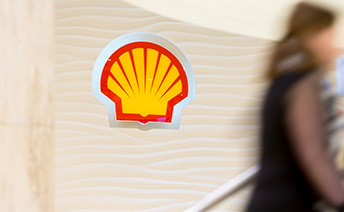Corporate
|
|
|
$ million |
||||
|---|---|---|---|---|---|---|---|
|
2022 |
2021 |
2020 |
||||
Segment earnings |
(2,461) |
(2,606) |
(2,952) |
||||
Comprising: |
|
|
|
||||
Net interest [A] |
(1,723) |
(2,701) |
(2,991) |
||||
Operating expenses and other [B] |
(745) |
(570) |
(943) |
||||
Taxation credit |
7 |
665 |
982 |
||||
Identified Items |
(90) |
81 |
460 |
||||
Adjusted Earnings |
(2,371) |
(2,686) |
(3,412) |
||||
Adjusted EBITDA |
(725) |
(554) |
(933) |
||||
|
|||||||
Overview
The Corporate segment covers the non-operating activities supporting Shell. It comprises Shell’s holdings and treasury organisation, self-insurance activities and headquarters and central functions. All finance expense, income and related taxes are included in Corporate segment earnings rather than in the earnings of business segments.
The holdings and treasury organisation manages many of the Corporate entities. It is the point of contact between Shell and external capital markets, conducting a wide range of transactions, such as raising debt instruments and transacting foreign exchange. Treasury centres in London and Singapore support these activities.
Headquarters and central functions provide business support in communications, finance, health, human resources, information technology (IT), legal services, real estate and security. They also provide support for shareholder-related activities. The central functions are supported by business service centres, which process transactions, manage data and produce statutory returns, among other services. Most headquarters and central-function costs are recovered from the business segments. Costs that are not recovered are retained in Corporate.
Earnings 2022-2021
Segment earnings in 2022 were an expense of $2,461 million, compared with $2,606 million in 2021.
This decrease in expense was mainly driven by favourable movements in net interest expense. This was primarily due to an increase in interest income generated on cash balances, a reduction in interest expense on lease liabilities, and a reduction in interest expense on debt following repayments in 2021. This was partially offset by lower tax credits on financing items and higher net foreign exchange losses due to unfavourable exchange rate movements.
Prior year earnings summary
Our earnings summary for the financial year ended December 31, 2021, compared with the financial year ended December 31, 2020, can be found in the Annual Report and Accounts (page 74) and Form 20-F (page 73) for the year ended December 31, 2021, as filed with the Registrar of Companies for England and Wales and the US Securities and Exchange Commission, respectively.
Self-insurance
We mainly self-insure our hazard risk exposures. Our Group insurance companies are adequately capitalised to meet self-insurance obligations and respective regulations, though they may transfer risks to third-party insurers where economical, effective and relevant (see “Risk factors”). We continually assess the safety performance of our operations and make risk mitigation recommendations, where relevant, to minimise the risk of an accident.
Information technology and cyber security
Digitalisation is a key success factor in Shell’s Powering Progress strategy. Shell is fast transforming its IT systems to support the evolving portfolio of businesses and is investing in new technologies to enhance IT capabilities such as data analytics, artificial intelligence, machine learning and virtual reality, bringing value to the business.
The growing dependence on information technology and data also brings risks which could cause significant harm to Shell in the form of loss of productivity, loss of intellectual property, regulatory fines and reputational damage. Cyber security is key to managing those risks, especially in today’s increasingly regulated environment and adverse cyber threat landscape.
Shell operates a multi-level defence strategy underpinned by the Shell IT Control Framework and advanced cyber defence capabilities to prevent, detect, respond to, and evolve with complex cyber and data privacy risks. At the same time, we continuously measure and, where required, further improve our cyber-security capabilities to reduce the likelihood of successful cyber attacks.
A cyber security mindset across the enterprise forms the first line of defence to protect Shell. Robust governance processes are embedded across Shell to increase cyber awareness, monitor key cyber risks, and provide risk assurance. Cyber risk strategy and risk management are regularly reviewed with the Audit Committee and Board of Directors. Shell employees and contract staff are subject to mandatory courses and regular awareness campaigns aimed at protecting us against cyber threats. See “Risk factors”.










